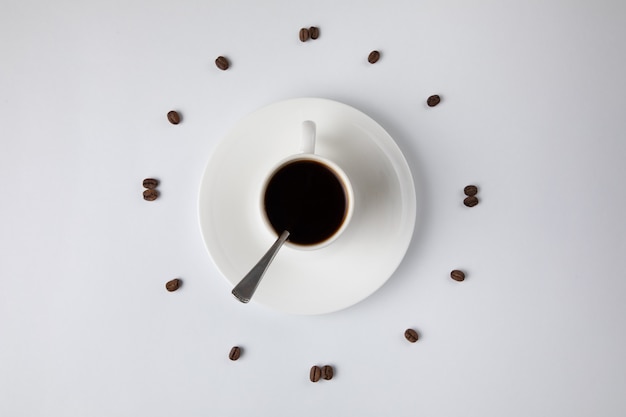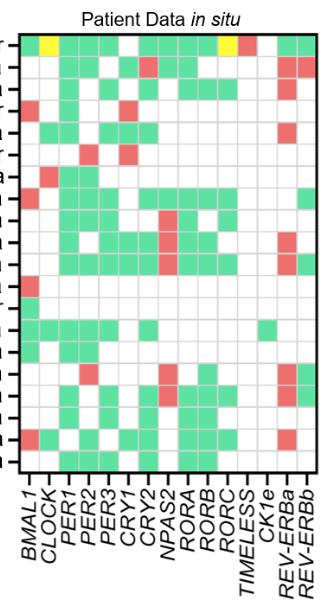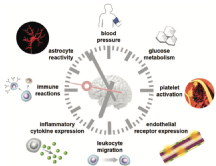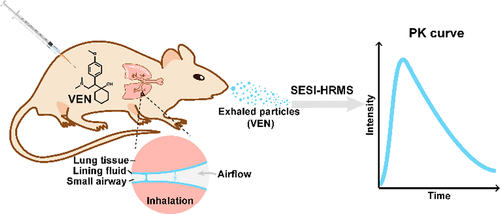A complete up-to-date list of publications of Robert can be found on Google Scholar and full-texts might be available from the Warwick Research Active Portal (WRAP).
 |
Sleep pressure and circadian rhythms influence one another. However, the regulatory mechanisms are unclear. Here, the authors show that adenosine A1/A2A receptor antagonists, such as caffeine, shift circadian rhythms and enhance the effects of light, providing a molecular link between sleep pressure and circadian rhythm.
|
 |
Circadian rhythms are endogenously generated physiological and molecular rhythms with a cycle length of about 24 h. Bioluminescent reporters have been exceptionally useful for studying circadian rhythms in numerous species. Here, we report development of a reporter mouse generated by modification of a widely expressed and highly rhythmic gene encoding D-site albumin promoter binding protein (Dbp). In this line of mice, firefly luciferase is expressed from the Dbp locus in a Cre-recombinase-dependent manner, allowing assessment of bioluminescence rhythms in specific cellular populations. A mouse line in which luciferase expression was Cre-independent was also generated. The Dbp reporter alleles do not alter Dbp gene expression rhythms in liver or circadian locomotor activity rhythms. In vitro and In vivo studies show the utility of the reporter alleles for monitoring rhythmicity. Our studies reveal cell-type specific characteristics of rhythms among neuronal populations within the suprachiasmatic nuclei in vitro. In vivo studies show stable Dbp-driven bioluminescence rhythms in the liver of Albumin-Cre;DbpKI/+ liver reporter mice. After a shift of the lighting schedule, locomotor activity achieved the proper phase relationship with the new lighting cycle more rapidly than hepatic bioluminescence did. As previously shown, restricting food access to the daytime altered the phase of hepatic rhythmicity. Our model allowed assessment of the rate of recovery from misalignment once animals were provided with food ad libitum. These studies provide clear evidence for circadian misalignment following environmental perturbations and reveal the utility of this model for minimally invasive, longitudinal monitoring of rhythmicity from specific mouse tissues. |
|
|
Happy to be involved in this work from Xue (Amy) Li's lab at Jinan University, China, and colleagues from NTU Singapore and Basel. The project shows a further facete of breath as a matrix for metabolites, i.e., that even non-volatile compounds might be present. This could open further possibilities for the utility of breath biomarkers in the future. |
 |
Circadian rhythms regulate a vast array of physiological and cellular processes, as well as the hormonal milieu, to keep our cells synchronised to the light-dark cycle. Epidemiologic studies have implicated circadian disruption in the development of breast and other cancers, and numerous clock genes are dysregulated in human tumours. Here we review the evidence that circadian rhythms, when altered at the molecular level, influence cancer growth. We also note some common pitfalls in circadian-cancer research and how they might be avoided to maximise comparable results and minimise misleading data. Studies of circadian gene mutant mice, and human cancer models in vitro and in vivo, demonstrate that clock genes can impact tumourigenesis. Clock genes influence important cancer related pathways, ranging from p53-mediated apoptosis to cell cycle progression. Confusingly, clock dysfunction can be both pro- or anti- tumourigenic in a model and cell type specific manner. Due to this duality, there is no canonical mechanism for clock interaction with tumourigenic pathways. To understand the role of the circadian clock in patients’ tumours requires analysis of the molecular clock status compared to healthy tissue. Novel mathematical approaches are under development, but this remains largely aspirational, and is hampered by a lack of temporal information in publicly available datasets. Current evidence broadly supports the notion that the circadian clock is important for cancer biology. More work is necessary to develop an overarching model of this connection. Future studies would do well to analyse the clock network in addition to alterations in single clock genes. |
 |
The occurrence of stroke in humans peaks in the morning. A recent study revealed that time of day mitigates the therapeutic impact of neuroprotective paradigms. These findings might not only explain the previous failure of trans- lation of neuroprotective therapies but inspire new paradigms in stroke chronopathophysiology research. Taking chro- notype into account may complement the many factors that influence efficacy of experimental therapies in stroke. |





